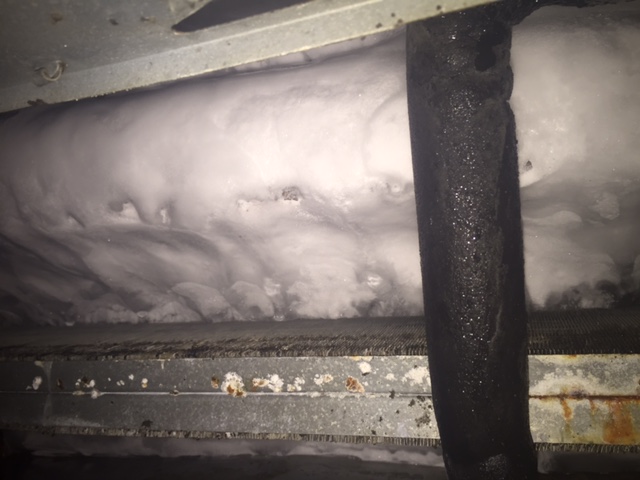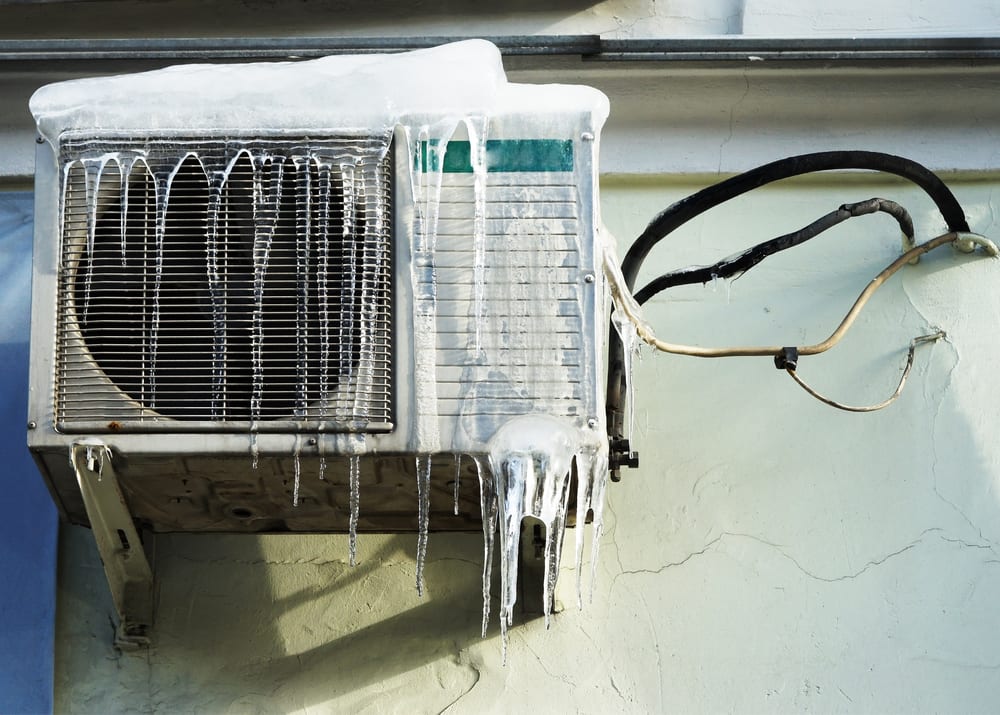Steps to Take If Your AC Pipe Gets Frozen: Complete Manual
Steps to Take If Your AC Pipe Gets Frozen: Complete Manual
Blog Article
The article author is making several good observations about Air Conditioner Frozen? How To Fix your Frozen AC Line in general in the article just below.

Intro
Uncovering that your a/c pipe is frozen can be concerning, specifically throughout hot summer months when you rely upon your air conditioning system the most. Understanding what to do in such a scenario is critical to avoid more damage to your air conditioning system and ensure your convenience indoors.
Recognizing the Causes
Several variables can contribute to the cold of an air conditioning pipeline. Comprehending these reasons can help you attend to the issue successfully.
Absence of Airflow
One common root cause of a frozen air conditioning pipeline is inadequate airflow. When the airflow over the evaporator coil is limited, it can cause the coil to drop below freezing temperature, causing ice development on the pipeline.
Low Refrigerant Levels
Inadequate refrigerant degrees in your air conditioning system can likewise cause an icy pipe. Low cooling agent degrees can trigger the stress in the system to go down, causing the freezing of moisture on the evaporator coil.
Winter Conditions
In colder environments, freezing temperatures outside can contribute to the freezing of AC pipelines. If your air conditioning device is not correctly insulated or if there are leaks in the ductwork, cool air can infiltrate the system, creating the pipeline to ice up.
Dirty Air Filters
Dirty or stopped up air filters can limit airflow in your a/c system, bring about various problems, consisting of a frozen pipe. It's important to change or cleanse your air filterings system consistently to make certain proper airflow and prevent ice accumulation.
Indicators of a Frozen Air Conditioning Pipe
Recognizing the indicators of a frozen a/c pipeline is essential for prompt action.
Lowered Airflow
If you notice a significant decrease in airflow from your vents, it can indicate an icy pipeline.
Ice Buildup on the Pipe
Noticeable ice accumulation on the refrigerant line or the evaporator coil is a clear indication of an icy a/c pipe.
Weird Sounds from the Unit
Unusual audios, such as hissing or gurgling, coming from your a/c unit can signal that there's ice existing on the pipe.
Immediate Actions to Take
When faced with an icy AC pipeline, it's essential to act swiftly to stop further damage to your cooling system.
Switching off the AC
The primary step is to switch off your air conditioning system to prevent the system from running and intensifying the problem.
Checking for Blockages
Inspect the area around the indoor unit for any obstructions that may be obstructing air movement, such as furnishings or curtains.
Thawing the Pipe
You can make use of gentle approaches like putting towels taken in warm water around the icy pipe to aid thaw it slowly.
Safety nets
Taking safety nets can aid avoid future events of a frozen a/c pipeline.
Regular Maintenance Checks
Arrange normal maintenance contact a specialist HVAC specialist to guarantee that your a/c system is running successfully.
Transforming Air Filters
On a regular basis change or cleanse your air filters to avoid air movement limitations and preserve optimum performance.
Protecting Exposed Pipes
If your air conditioner pipelines are exposed to cold temperatures, consider insulating them to stop cold throughout cold weather.
Looking For Professional Help
If DIY approaches stop working to fix the issue or if you're uncertain about just how to continue, it's finest to seek aid from a certified HVAC specialist.
When DIY Methods Fail
If your efforts to thaw the pipeline or address other problems are unsuccessful, it's time to employ a professional.
Importance of Hiring a Professional HVAC Technician
A qualified HVAC professional has the proficiency and devices required to diagnose and repair concerns with your a/c system securely and successfully.
Verdict
Dealing with an icy AC pipe can be an irritating experience, but understanding just how to respond can assist lessen damages and restore convenience to your home. By recognizing the causes, recognizing the indications, and taking timely activity, you can properly address the issue and avoid future incidents.
G UP? HOW TO FIX IT?
It happens all over America. And the rest of the world probably. It’s the hottest day ever and for some darn reason your AC isn’t cooling the house. You fiddle with the thermostat to try and fix the problem. Nada. All you can do now is go outside and check the AC unit. You make your way there and find your air conditioner unit is frozen! But how?
In this post we’ll cover how you can tell that your air conditioner has frozen (other than the obvious reasons), what could have caused the freeze, and some of the things you can do about your AC freezing up. And if you have a frozen heat pump condenser, read our blog about it to learn what to do! But remember, it is always best to avoid your AC freezing up with an AC tune up. And if you are moving into a home, it's critical to get HVAC inspection so that you are aware of an AC problems before you move in.
Keep reading and you may be able to fix the frozen AC yourself. If you can’t, call an HVAC specialist. If you live in Maryland, call SuperTech HVAC for AC repair. We’ll take care of it.
How Does An Air Conditioning Unit Work?
How you probably imagine an AC works is wrong. Contrary to popular belief, an AC system does not inject cool air into a building. Instead, it removes the heat from inside and transfers it outside. Cool huh? (Pun intended).There are 4 major components among the 3 stations of an air conditioning system: the evaporator coil, the compressor, the condenser, and the refrigerant – a special chemical that links everything together through a closed loop system.
Station 1:
Warm indoor air is sucked into the return vent, through a filter, and blows over the evaporator coil. The heat is absorbed into the cold refrigerant, turning it from liquid to gas. The air, which is now cool, is blown back into the home to areas that your thermostat, i.e. you, has decided.
Station 2:
The refrigerant makes its way outside the house to the compressor, which squeezes the warm refrigerant, raising its gaseous temperature even more.
Station 3:
When the super hot vapor refrigerant reaches the condenser, the last step, the heat is expelled and absorbed into the outdoor air. The refrigerant instantly cools, which changes it from gas back to liquid form. The cold liquid refrigerant is now ready to return to station 1 and repeat the process.
Is Your AC Freezing Up? Here Are The Signs:
As you may have guessed, your air conditioner unit freezing up on a hot day is not normal.
If this happens, there's no need to panic. Often the issue can be solved with a little troubleshooting. If the AC unit is left frozen for too long however, you may find yourself with a bigger problem.
First things first, how do you know your AC is frozen?
Well, the obvious sign is the ice on your refrigerant line-set pipe. Simply check between your outdoor AC unit and your home's exterior wall to see whether your AC line frozen.
You might also have a frozen evaporator coil. This one's not as easy to check. You'll need to open a panel on the indoor unit to inspect. Don't do this unless you're handy. If you aren't, call an HVAC pro like SuperTech HVAC or you may damage something in the process.

Do you like reading up on Why Is Ice On My Outside Air Conditione? Place a remark down the page. We will be delighted to see your responses about this posting. We hope to see you back again later on. In case you enjoyed our post kindly do not forget to pass it around. Many thanks for your time spent reading it.
Request A Quote Report this page